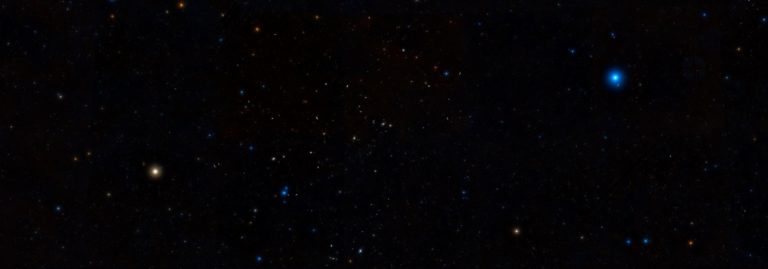The Virgo Cluster is the closest large cluster of galaxies to the Milky Way. With over a thousand known members, the cluster spans an area of the sky about 5 by 3 degrees in size. While some of the most prominent members can be seen in smaller instruments, a 6-inch telescope will reveal about 160 galaxies in this region on a clear night.
The Virgo Cluster contains about 2,000 galaxies, which lie in the direction of the constellations Virgo and Coma Berenices. It is sometimes also called the Virgo-Coma Cluster. It has an estimated mass of 1.2×1015 solar masses and its centre is located about 53.8 million light years, or 16.5 megaparsecs away in Virgo constellation.
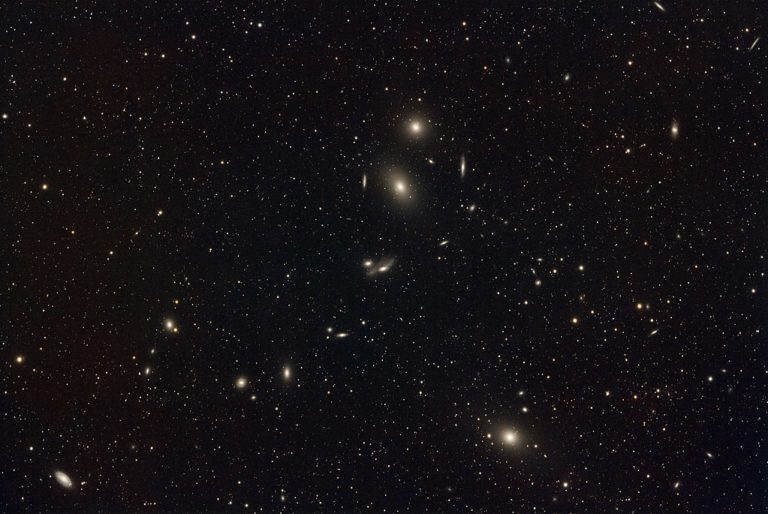
The Virgo Cluster lies at the heart of the larger and more massive Virgo Supercluster, which also contains the Local Group – the group of galaxies that includes our own, the Milky Way – as an outlying member. The Virgo Cluster has a considerable gravitational effect on the nearby galaxies due to its large mass, which slows down the recession of the Local Group. As a result, the Local Group of galaxies will likely eventually fall into the Virgo Cluster.
With a diameter of approximately 15 million light years, the Virgo Cluster is only slightly larger than the Local Group, but contains 50 times the number of members. Most members are dwarf galaxies, but the most prominent ones are ellipticals and spirals. Up to 10% of the stars in the cluster are intergalactic stars, most likely expelled from their galaxies as a result of interactions with other galaxies.
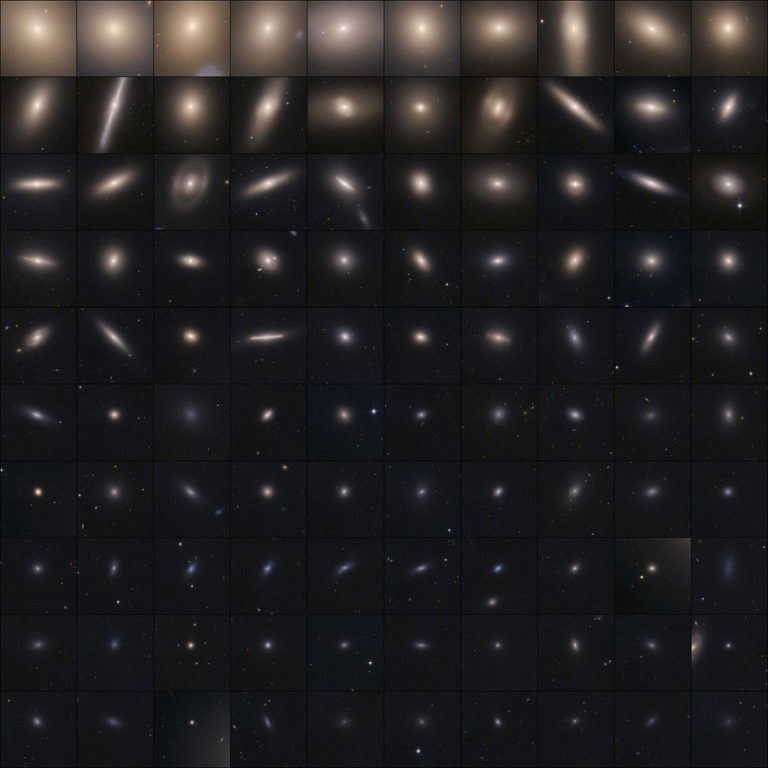
The cluster’s mass accelerates the members to significantly higher velocities with respect to the cluster’s centre. As a result, some of the cluster members exhibit the highest blue-shifts known (i.e. they are moving in our direction faster than other galaxies) as they move fast toward the cluster’s centre from the opposite side.
The most prominent galaxies in the Virgo Cluster can be seen in a small telescope. They were discovered by Pierre Méchain and Charles Messier in the late 1770s and early 1780s. Messier added them to his catalogue, describing them as nebulae without stars. His first recorded observation of an unusual concentration of what he thought were nebulae dates back to 1784.
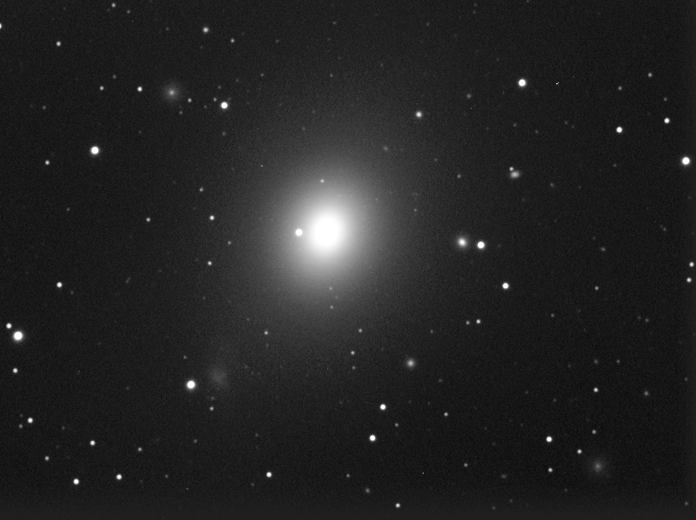
The members of the Virgo Cluster were not recognized as galaxies until the 1920s, when Edwin P. Hubble’s discovery of the Cepheid variables, stars used to determine distances, in the Andromeda Galaxy (M31) proved that these “nebulae” were in fact far too distant to be part of our galaxy.
The Virgo Cluster’s brightest member is the elliptical galaxy Messier 49, but its best-known galaxy is the supergiant elliptical Messier 87, which lies in the cluster’s centre.
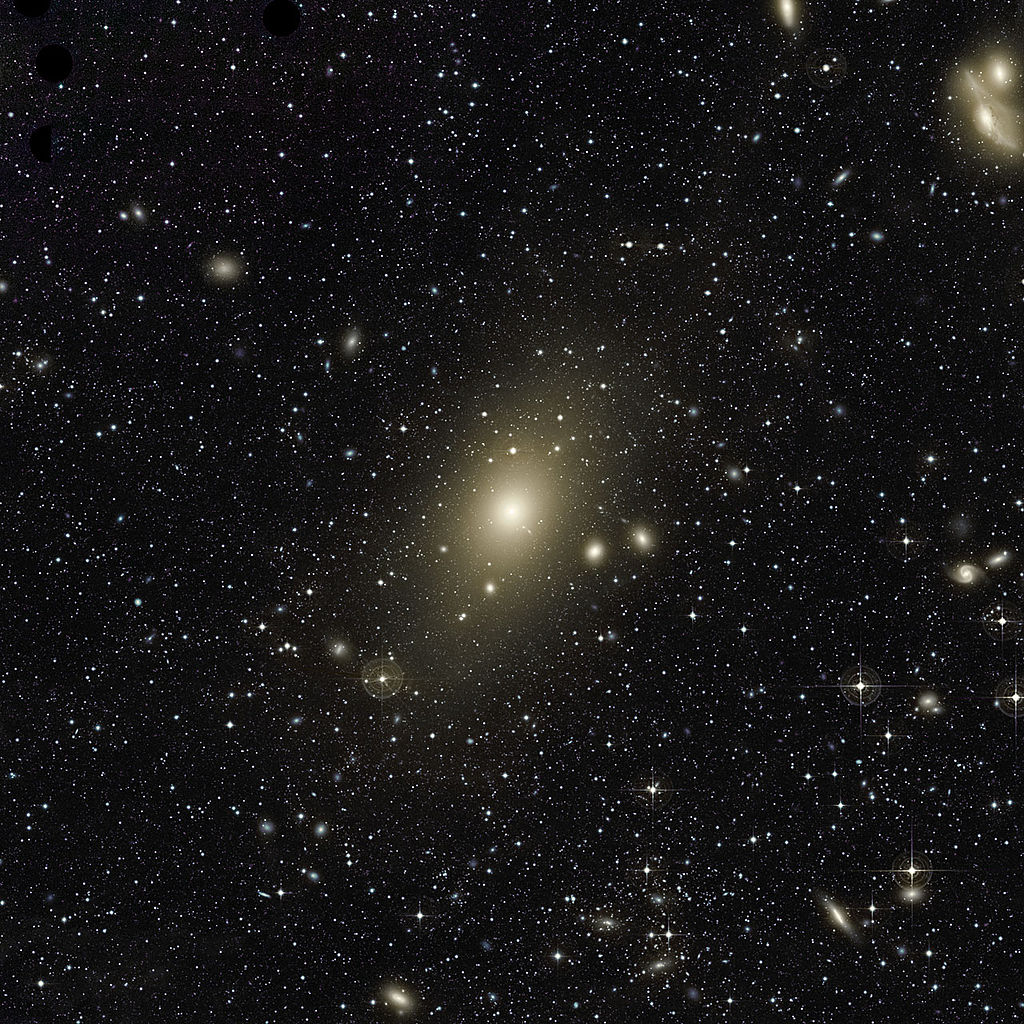
The cluster has three distinct subgroups of galaxies: Virgo A, centred on Messier 87, a group centred on Messier 86, and Virgo B, centred on Messier 49. Some sources include a Virgo C subcluster around Messier 60 and a Low Velocity Cloud (LVC) centred on the spiral galaxy NGC 4216.
The Virgo A subcluster is the largest and dominates the cluster, with members including Messier 87, Messier 88, Messier 89, Messier 90, Messier 58, Messier 84, Messier 85, Messier 91, and Messier 100. The subclusters are in the process of merging and will eventually form a vast single cluster. The larger subclusters are surrounded by smaller galaxy clouds, which mostly include spiral galaxies and are known as the S Cloud, N Cloud and Virgo E.
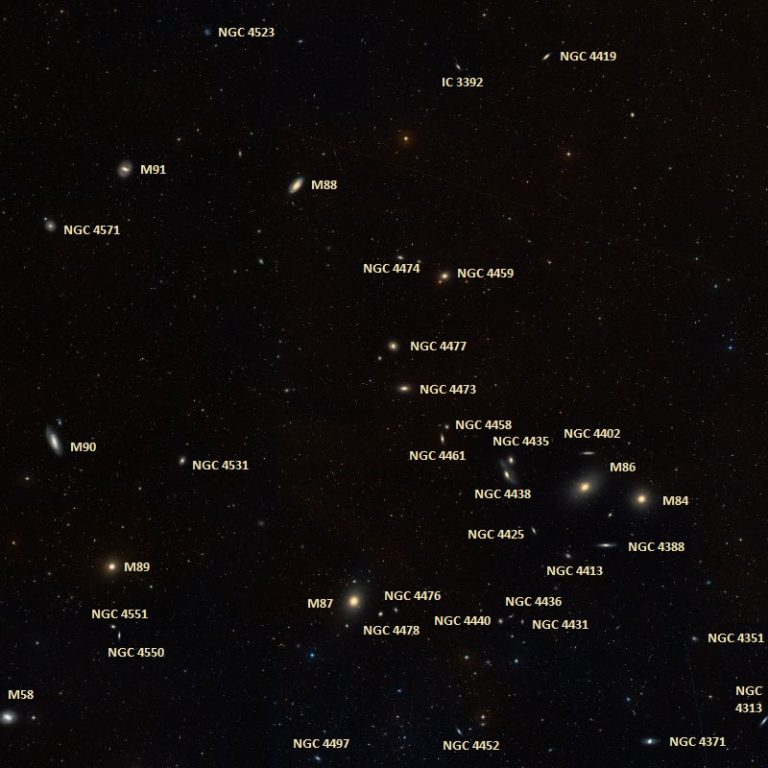
Messier galaxies
Messier galaxies that are members of the Virgo Cluster are Messier 49, Messier 58, Messier 59, Messier 60, Messier 61, Messier 84, Messier 86, Messier 87, Messier 89, and Messier 90 in Virgo constellation and Messier 85, Messier 88, Messier 91, Messier 98, Messier 99 and Messier 100 in the constellation Coma Berenices.
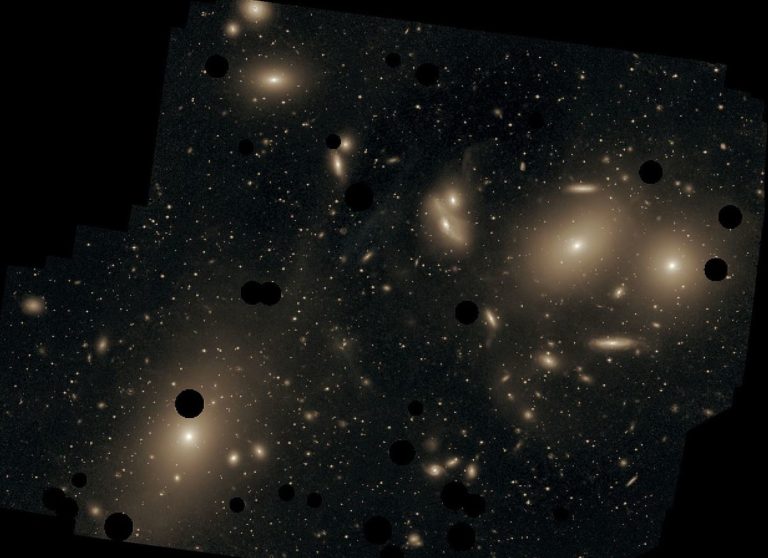
Of these, Messier 49, Messier 59, Messier 60, Messier 87, Messier 89 are elliptical galaxies, while Messier 84, Messier 85 and Messier 86 are either lenticular or elliptical. Messier 88, Messier 90, Messier 98, Messier 99 and Messier 100 are spiral galaxies and Messier 58, Messier 61 and Messier 91 are barred spirals.
Other Virgo Cluster members
Other prominent galaxies in the Virgo Cluster include NGC 4216, NGC 4262, NGC 4435, NGC 4438, NGC 4450, NGC 4526, NGC 4527, NGC 4550, NGC 4567, NGC 4568, NGC 4571, NGC 4651, and NGC 4654.
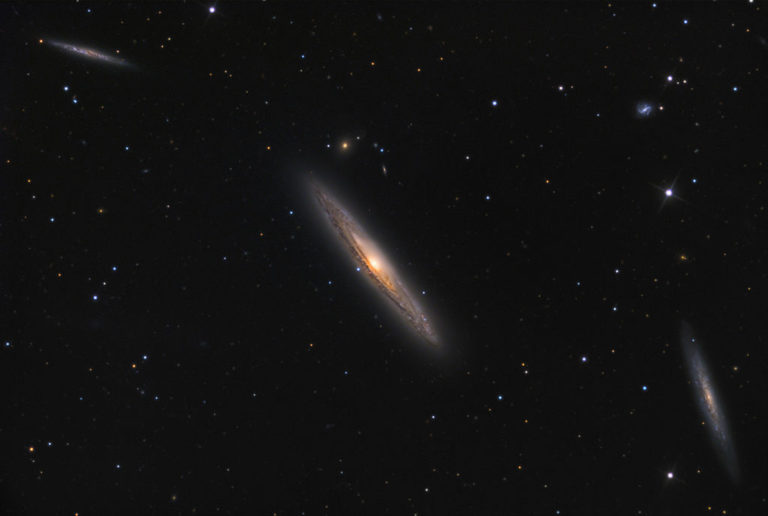
NGC 4216 is an edge-on spiral galaxy about 100,000 light years across, about the same size as the Milky Way. It lies in Virgo constellation and has about 700 globular clusters in its halo. The galaxy is also notable for two stellar streams, the result of the large galaxy disrupting and cannibalizing its smaller neighbours. NGC 4216 lies in the vicinity of NGC 4206 and NGC 4222, two spiral galaxies that can also be seen in moderate to large amateur telescopes.
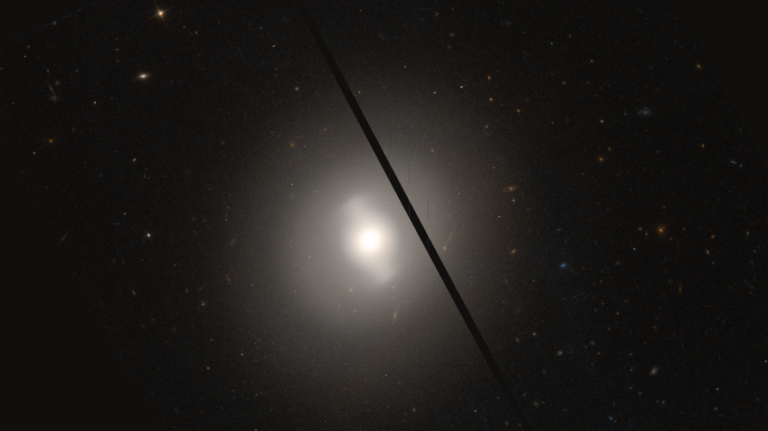
NGC 4262 is a barred lenticular galaxy located near Messier 99 and the pair NGC 4302 and NGC 4298 in Coma Berenices constellation. It is notable for a ring that contains an abundance of neutral hydrogen and is tilted with respect to the galaxy’s plane. The ring is believed to be the result of the galaxy stripping gas from M99 or another neighbour.
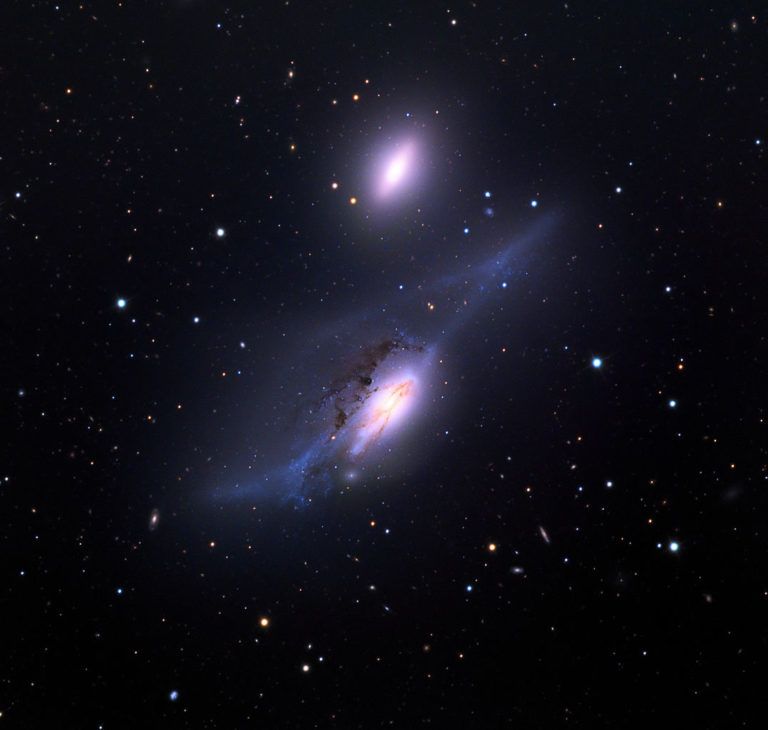
NGC 4435 and NGC 4438, also known as the Eyes Galaxies or Arp 120, are a pair of colliding galaxies found in Markarian’s Chain, a string of galaxies that also includes M84, M86, NGC 4477, NGC 4473, NGC 4461 and NGC 4458. The Eyes Galaxies are interacting and likely had encounters with M86 in the past.
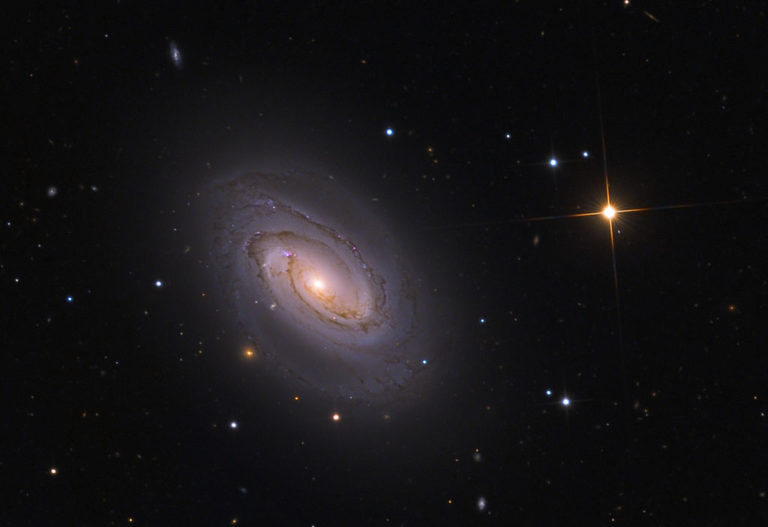
NGC 4450 is a spiral galaxy in Coma Berenices. It is classified as an anemic galaxy and contains very little neutral hydrogen and few star forming regions. It occupies an area of 5.2′ by 3.9′ of the apparent sky and has a visual magnitude of 10.9. The galaxy contains a supermassive black hole in its centre.
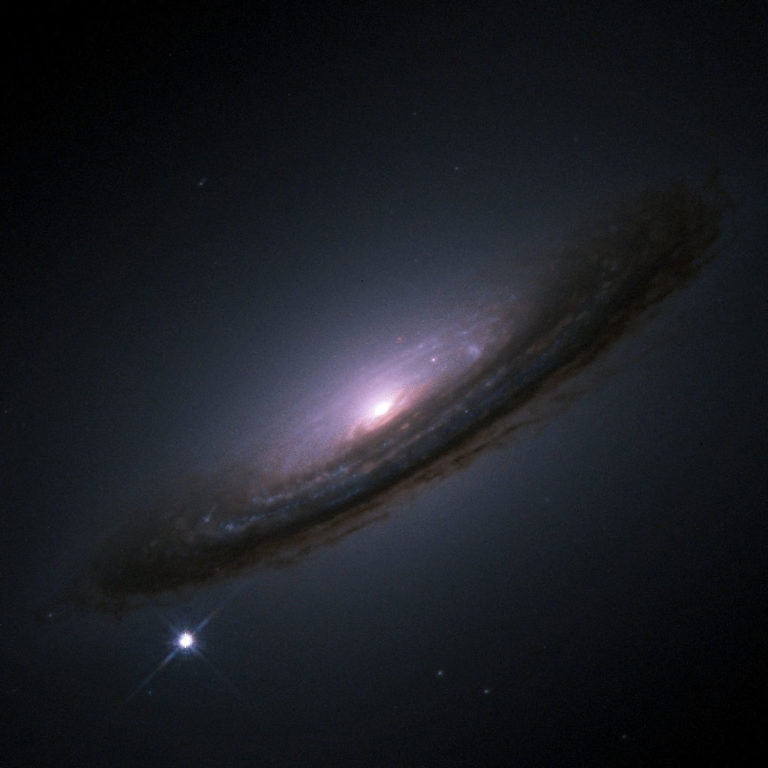
NGC 4526, also known as Superciliosa Virginis or the heavy-eyebrow galaxy, is a lenticular member of the cluster, located in the constellation Virgo. With an apparent magnitude of 10.7, it is one of the brightest lenticular galaxies known. The galaxy has an apparent size of 7.2′ by 2.4′. Two supernovae were discovered in it in the last several decades. SN 1969E, which peaked at magnitude 16, was discovered in 1969 and SN 1994D, a Type Ia supernova, was discovered in 1994.
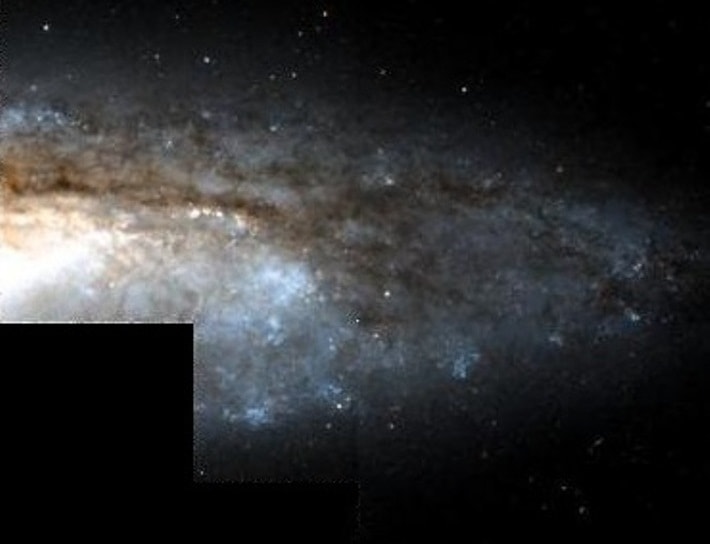
NGC 4527, an intermediate spiral galaxy in Virgo, lies at a distance of 48.9 million light years and has an apparent magnitude of 11.4. The galaxy occupies an area 6.2’ by 2.1’ in size. It is an outlying member of the Virgo Cluster, found in the S Cloud subcluster. The galaxy is similar to the better known Andromeda Galaxy (M31), but unlike Andromeda, NGC 4527 is a starburst galaxy, containing 2.5 billion solar masses of molecular hydrogen in its central region.
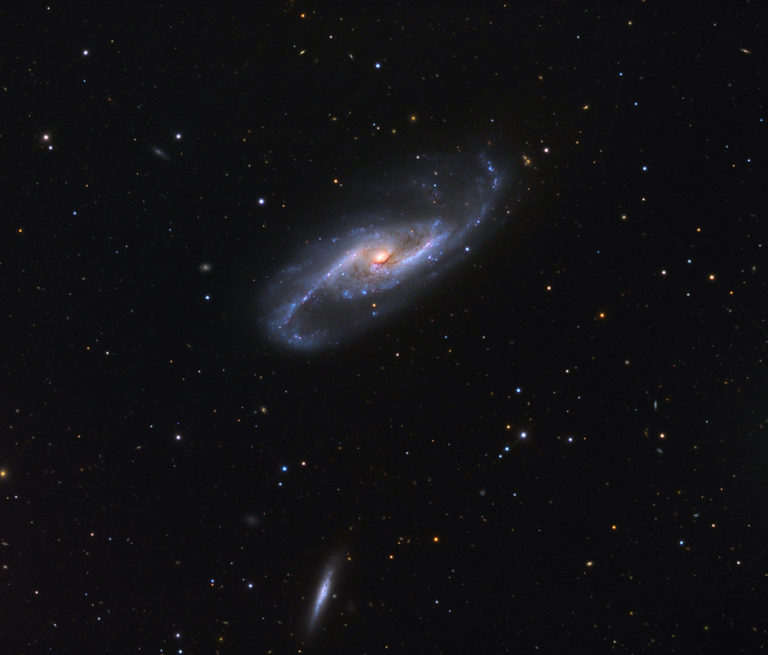
NGC 4536 is another intermediate spiral in Virgo, located about 10 degrees to the south of the cluster’s midpoint, but it is not a member of the Virgo Cluster. The galaxy is experiencing a burst of star formation, especially in the ring around the nucleus. NGC 4536 lies at a distance of 48.7 million light years from Earth and has an apparent magnitude of 11.1. It has an apparent size of 7.6’ by 3.2’. The galaxy was discovered by William Herschel on January 24, 1784.
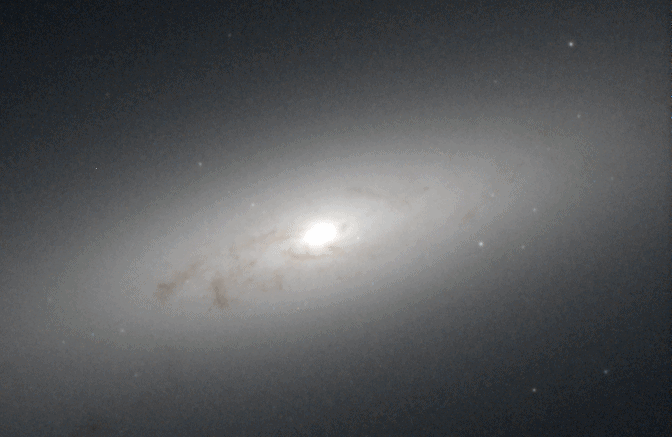
NGC 4550 is a barred lenticular member of the Virgo Cluster, located at a distance of 50 million light years from Earth. The galaxy has an apparent magnitude of 12.2 and an apparent size of 2.85’ by 0.82’. It is notable for being one of the few galaxies whose stars around the core rotate in the opposite direction to other stars in the galaxy.
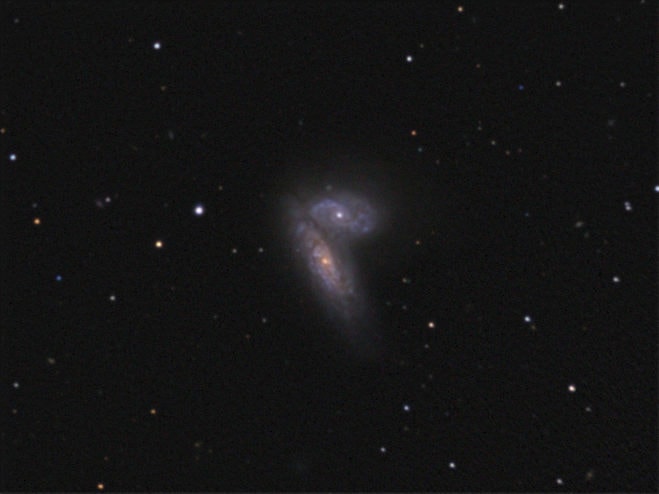
The Siamese Twins, or the Butterfly Galaxies (NGC 4567 and NGC 4568) are a pair of colliding unbarred spiral galaxies currently in the process of merging with each other. The galaxies lie at a distance of 59.4 million light years from Earth, in Virgo constellation, and have an apparent magnitude of 10.9. Their apparent size is 4.6’ by 2.1’. The interacting galaxies were discovered by William Herschel in 1784.
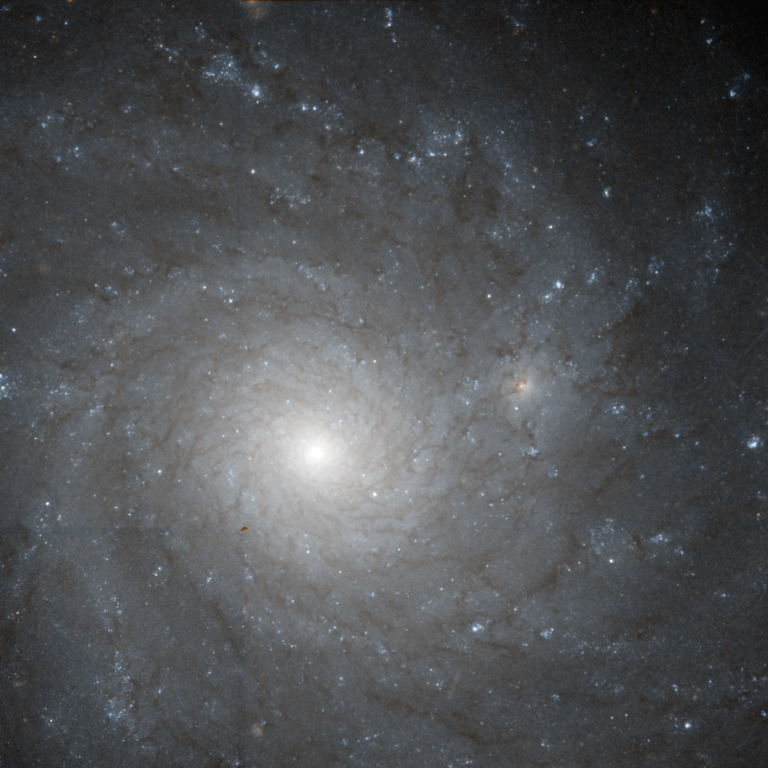
The spiral galaxy NGC 4571 in Coma Berenices has an apparent magnitude of 11.8 and occupies an area 3.6’ by 3.2’ in size. It was discovered by William Herschel on 14 January, 1787. His son John Herschel proposed the galaxy as a candidate for Messier 91, but about 2 centuries later, the barred spiral galaxy NGC 4548 was identified as Messier’s 91st entry.
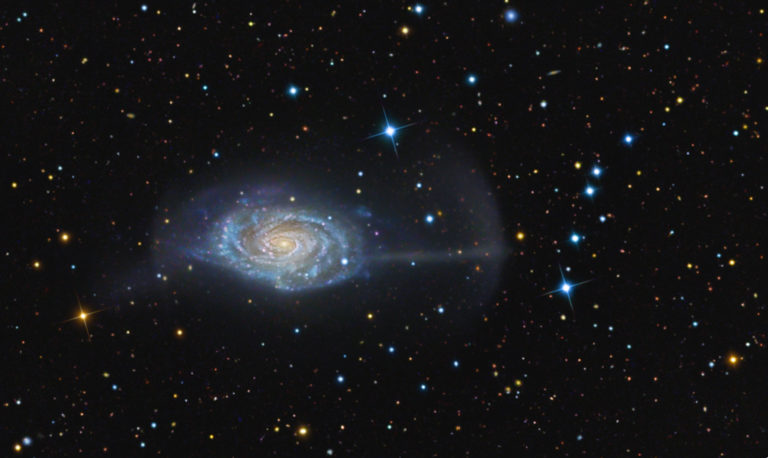
The Umbrella Galaxy (NGC 4651), another spiral galaxy in Coma Berenices, lies on the outskirts of the Virgo Cluster, at a distance estimated between 35 million light years and 72 million light years from Earth. The galaxy was named for its umbrella-shaped appearance, a result of an encounter with a considerably smaller galaxy that has been ripped apart by its larger neighbour’s tidal forces. Halton Arp included NGC 4651 in his Atlas of Peculiar Galaxies as Arp 189, describing it as a galaxy with filaments. The galaxy has an apparent magnitude of 11.39 and an apparent size of 4.0’ by 2.6’.
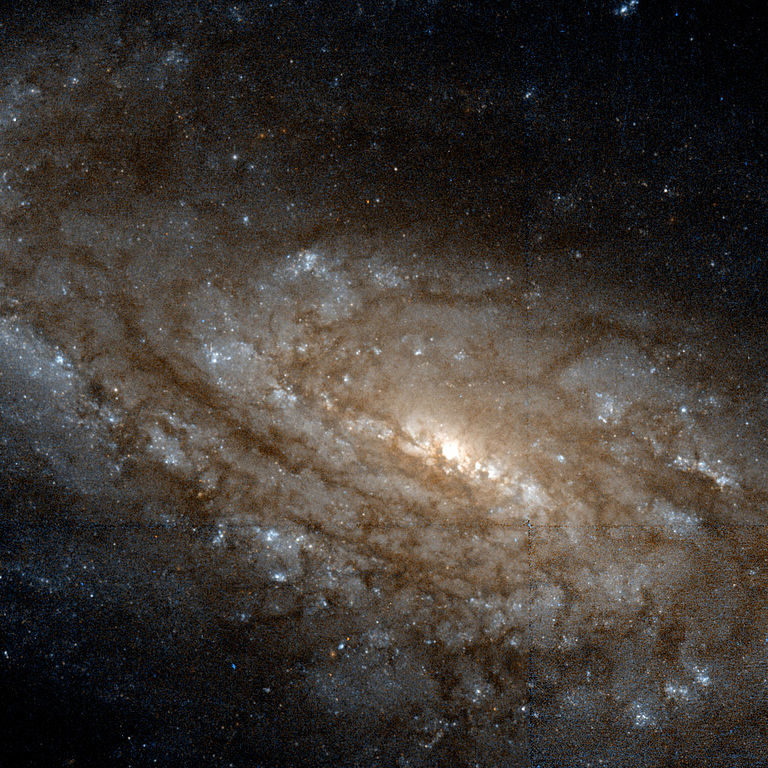
NGC 4654, an intermediate spiral galaxy in Virgo, lies 55 million light years from Earth and has an apparent magnitude of 12. It occupies an area 5.2’ by 1.4’ in size. The galaxy may have interacted with the neighbouring spiral galaxy NGC 4639 about 500 million years ago. Both galaxies were discovered by William Herschel on April 12, 1784.
Virgo Cluster map
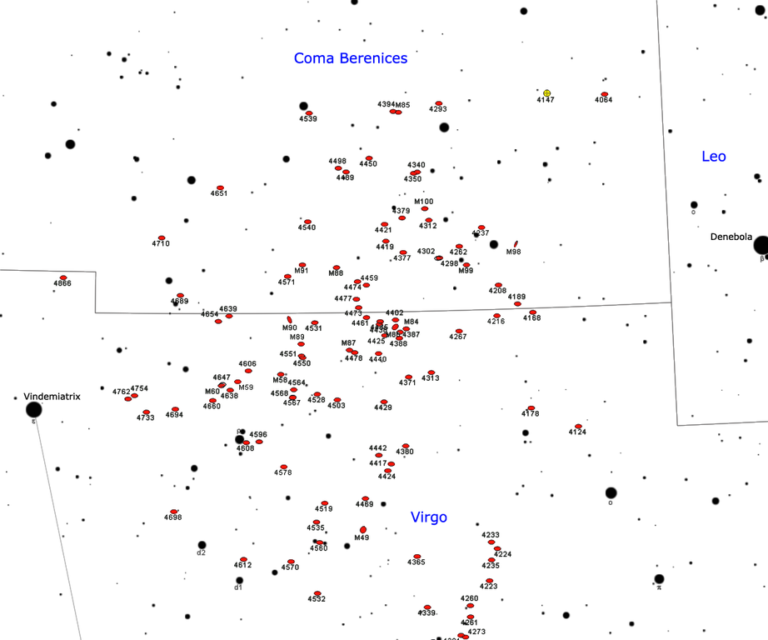
Virgo Cluster location
The centre of the Virgo Cluster is located between the bright stars Vindemiatrix in Virgo and Denebola in Leo constellation, which is where the most prominent cluster members can be found. The easiest way to locate Denebola is to find the Spring Triangle, a prominent spring asterism formed by Denebola, the considerably brighter Arcturus in Boötes constellation and Spica, the brightest star in Virgo. (A more prominent Spring Triangle is the one formed by Arcturus, Spica and the bright Regulus instead of Denebola, but the smaller triangle with Arcturus, Spica and Denebola is more equilateral.)
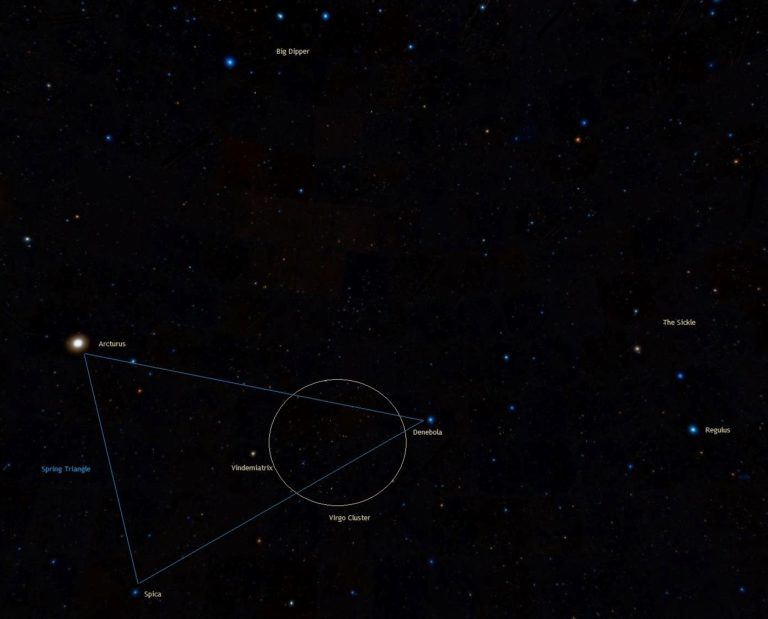
Arcturus and Spica can be located using the stars of the Big Dipper. The curved line formed by the arc of the Dipper’s handle first leads to Arcturus and then to Spica. These are the brightest stars along this imaginary line and easy to spot, even in less than ideal conditions.
Denebola, Beta Leonis, forms a nearly equilateral triangle with Arcturus and Spica. It lies east of Regulus, Leo’s brightest star, and marks the tail of the celestial Lion. Leo is easily recognized for the Sickle, a backward question mark formed by some of its brightest stars, representing the Lion’s head and mane. Regulus sits at the bottom of the Sickle, while Denebola is the brightest and easternmost of the three stars that form a triangle on the other side of Leo.
Denebola is a white, A-type main sequence star with a visual magnitude of 2.1. It is also part of the Great Diamond, an asterism it forms with Arcturus, Spica and Cor Caroli, the brightest star in the constellation Canes Venatici. Denebola can also be used to find five other prominent Messier galaxies, which lie between it and the brighter Regulus: Messier 65, Messier 66, Messier 105, Messier 95 and Messier 96.
Vindemiatrix, Epsilon Virginis, is located near the centre of the Spring Triangle. It is a yellow G-type giant star with an apparent magnitude of 2.8. It is the third brightest star in Virgo, after Spica and Porrima.
The Virgo Cluster galaxies can be seen in the region between Vindemiatrix and Denebola. The best time of year to observe the galaxies from northern latitudes is the spring.
